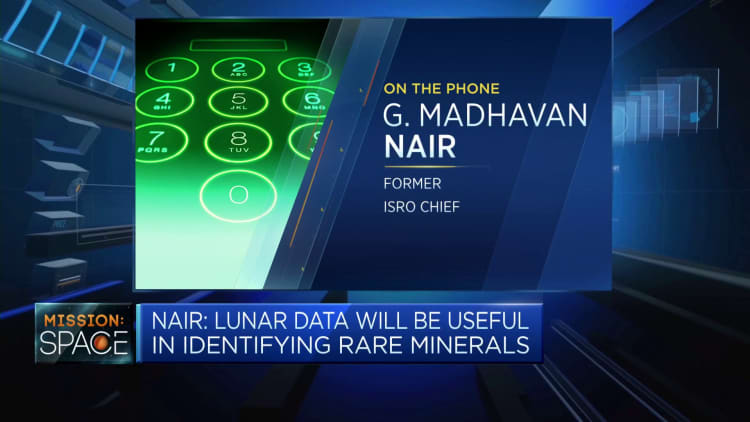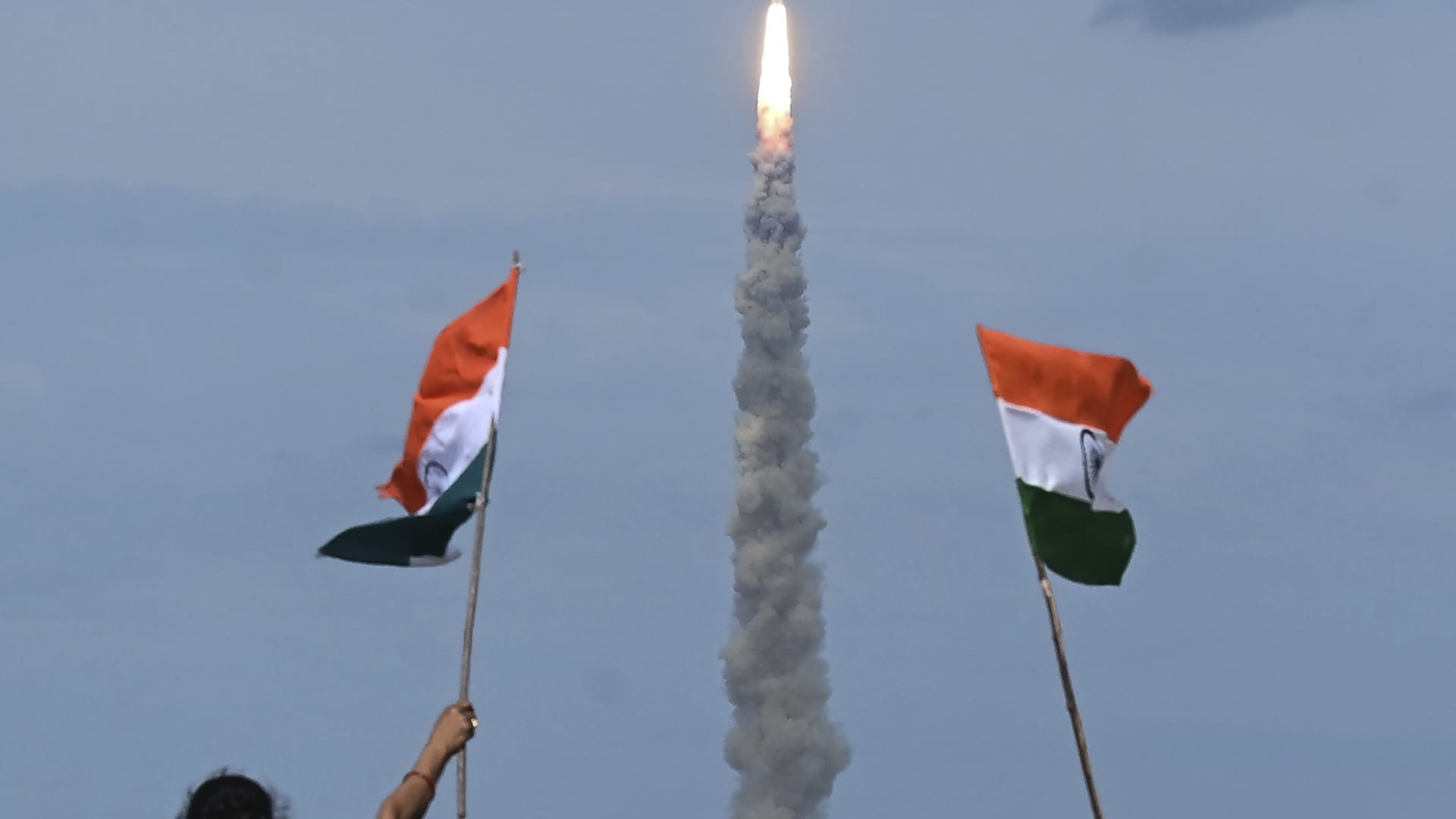India staked new claim as a national superpower in space, landing its Chandrayaan-3 mission safely on the moon’s unexplored south pole on Wednesday.
The Chandrayaan-3 spacecraft launched last month and touch downed on the lunar surface around 8:34 a.m. ET.
The feat makes India the fourth country – after Russia, the U.S. and China – to land on the moon, and the first to land on one of the moon’s lunar poles.
People wave Indian flags as an Indian Space Research Organisation (ISRO) rocket carrying the Chandrayaan-3 spacecraft lifts off from the Satish Dhawan Space Centre in Andhra Pradesh on July 14, 2023.
R.satish Babu | Afp | Getty Images
The lunar south pole has emerged as a place of recent exploration interest thanks to recent discoveries about traces of water ice on the moon. India previously attempted a lunar south pole landing in September 2019, but a software failure caused the Chandrayaan-2 mission to crash into the surface.
“[The south pole is] really a very interesting, historical, scientific and geologic area that a lot of countries are trying to get at that can serve as a base for future exploration,” Wendy Cobb, professor of strategy and security studies at the U.S. Air Force School of Advanced Air and Space Studies, told CNBC.
Cobb added that the discovery of water on the south pole of the moon is “really important for future exploration,” as it could serve as a source of fuel for rockets and spacecraft..

Days prior to Chandrayaan-3’s scheduled landing, Russia attempted to land its first spacecraft on the moon in almost 50 years. But the Luna-25 mission smashed into the lunar surface on Saturday, with Russian space agency Roscosmos confirming the spacecraft spun of control.
India is increasingly seen as a top player in space geopolitically.
During a June visit from India’s Prime Minister Narendra Modi, he signed agreements alongside President Joe Biden to join the Artemis Accords and further collaborate on missions between ISRO and NASA. Next year, the space agencies are expected to work together to fly Indian astronauts to the International Space Station.
India has also done more with less than its top global counterparts, with ISRO’s annual budget a fraction of NASA’s. In 2020, ISRO estimated the Chandrayaan-3 mission would cost about $75 million. The Covid pandemic delayed the Chandrayaan-3 mission from launching in 2021.

